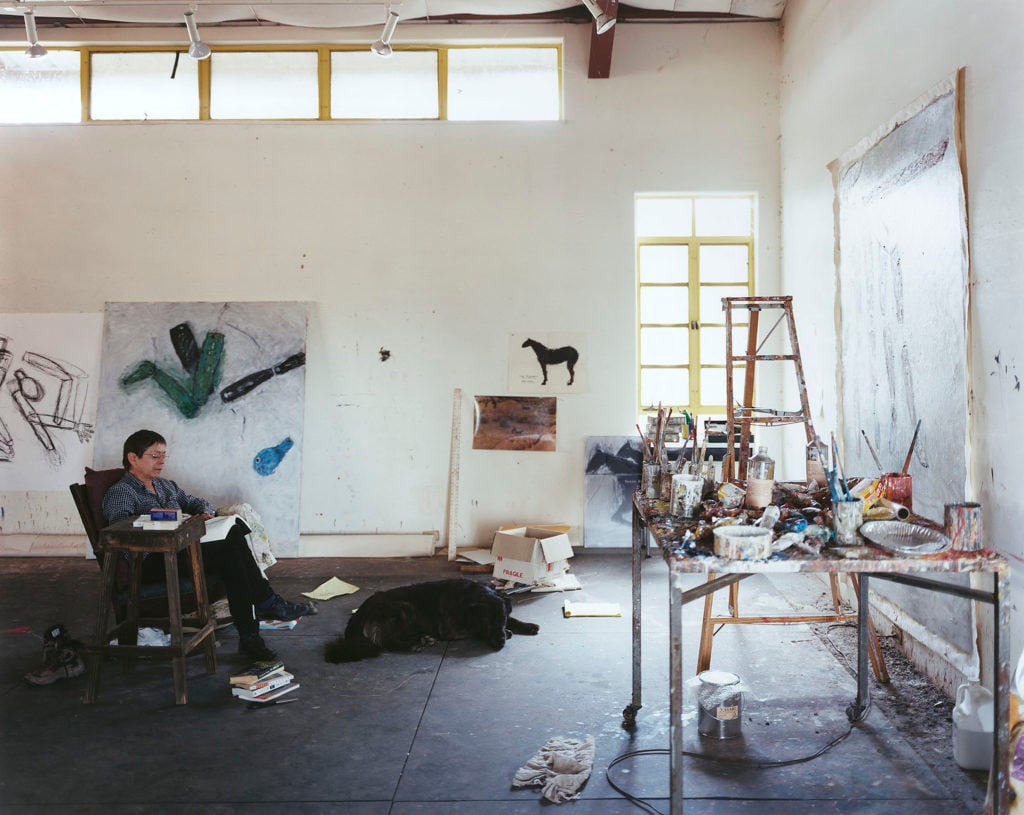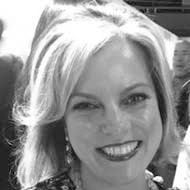The Art Detective is a weekly column by Katya Kazakina for Artnet News Pro that lifts the curtain on what’s really going on in the art market.
Two female artists made their debuts in high-stakes evening auctions in New York in May: one was an 82-year-old veteran with a long history of solo exhibitions, museum acquisitions, and rave reviews. The other was a 27-year-old newbie.
Whose do you think sold for more?
Mary Heilmann’s abstract canvas, The Passenger (1983), inspired by Michelangelo Antonioni’s similarly titled film, fetched $945,000 at the Thomas and Doris Ammann sale at Christie’s on May 9, tripling the artist’s previous auction high. The following night, Anna Weyant’s Summertime (2020) sold for $1.5 million.
This encapsulates the state of affairs for female artists in today’s investment-driven art market. While women have made strides in recent years amidst calls for greater equity, the older generation remains undervalued and generally overlooked by the market compared to the younger cohort. Even as auction houses broadcast greater inclusivity—a new trend is to stack the front of evening sales with works by women artists—the gender gap remains, well, gaping.
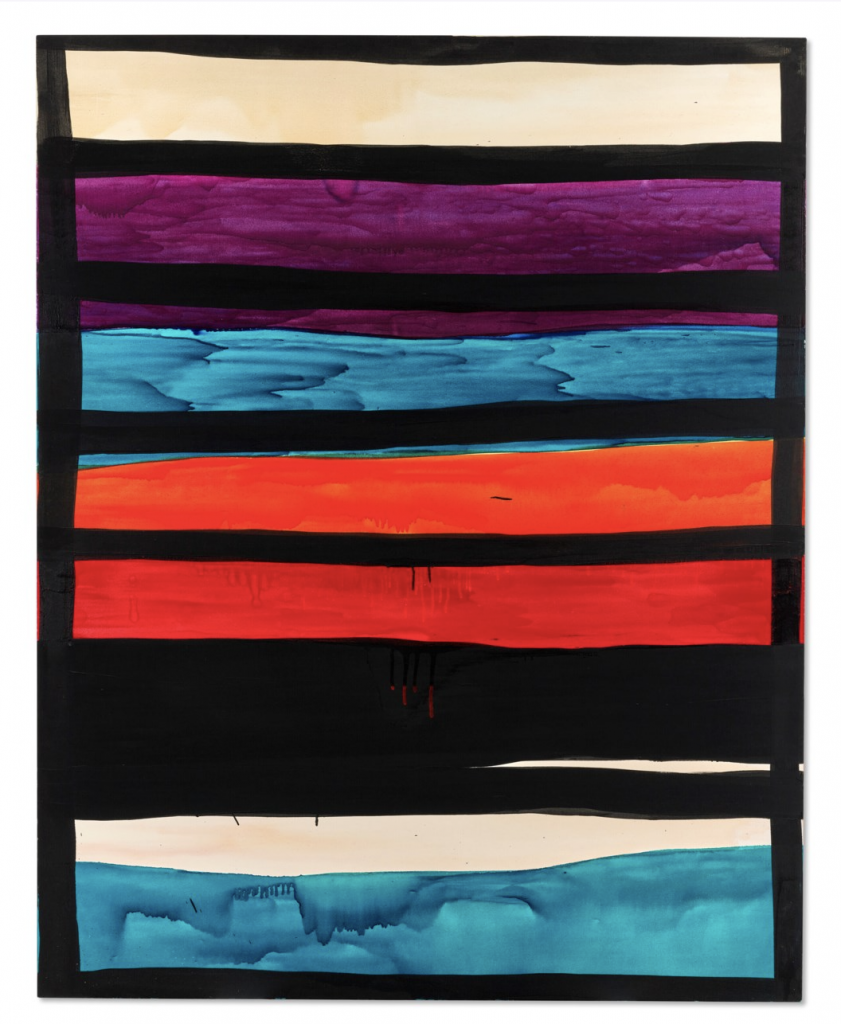
Mary Heilmann, Passenger (1983). Photo: Christie’s.
Work by older female artists accounted for just 5.3 percent of the $16.7 billion in global auction sales over the past five years, according to Artnet Price Database. Supporters worry that their prices may never catch up to those of their male peers.
“It’s a double whammy,” said Amy Smith-Stewart, chief curator of Aldrich Contemporary Art Museum in Ridgefield, Connecticut. “You are a woman and there’s this ageism.” The prospects get even more challenging along racial lines—of the 25 best-selling female artists at auction born between 1930 and 1974, only four are not white.
We pulled auction data since 2017 for female artists in two age groups: those born between 1930 and 1974, and those born since 1975. The results are shocking—not because the younger generation does not deserve success, but because of just how undervalued their predecessors are.
Heilmann (b. 1940) and her peers—Joan Snyder (b. 1940), Pat Steir (b. 1940), Susan Rothenberg (1945–2020), Elizabeth Murray (1940–2007), Faith Ringgold (b. 1930), Howardena Pindell (b. 1943)—“aren’t under the radar, critically,” said Liane Thatcher, Heilmann’s longtime studio manager. “They are under the radar in terms of the market.”
Heilmann’s CV is 59 pages long and her artworks are in more than 40 museums. Her art has totaled $3.8 million at auction—just ahead of Allison Zuckerman (b. 1990), who has never had a major museum show ($3.4 million).
Consider that Jamian Juliano-Villani (b. 1987) has generated about twice as much money at auction ($1.9 million) as Ringgold ($1 million), who just had a career retrospective at the New Museum. Or that the $18.8 million total by Loie Hollowell (b. 1983) exceeded Steir’s $18.3 million. Weyant’s $5.2 million gross at auction (in just one year!) is just behind the $5.9 million generated by Eva Hesse (1936–70), the subject of a new show at the Guggenheim. Paintings by Issy Wood (b. 1993) achieved $5.2 million while Rothenberg, who was just the subject of a mini-survey at the Museum of Modern Art, pulled in $4 million.
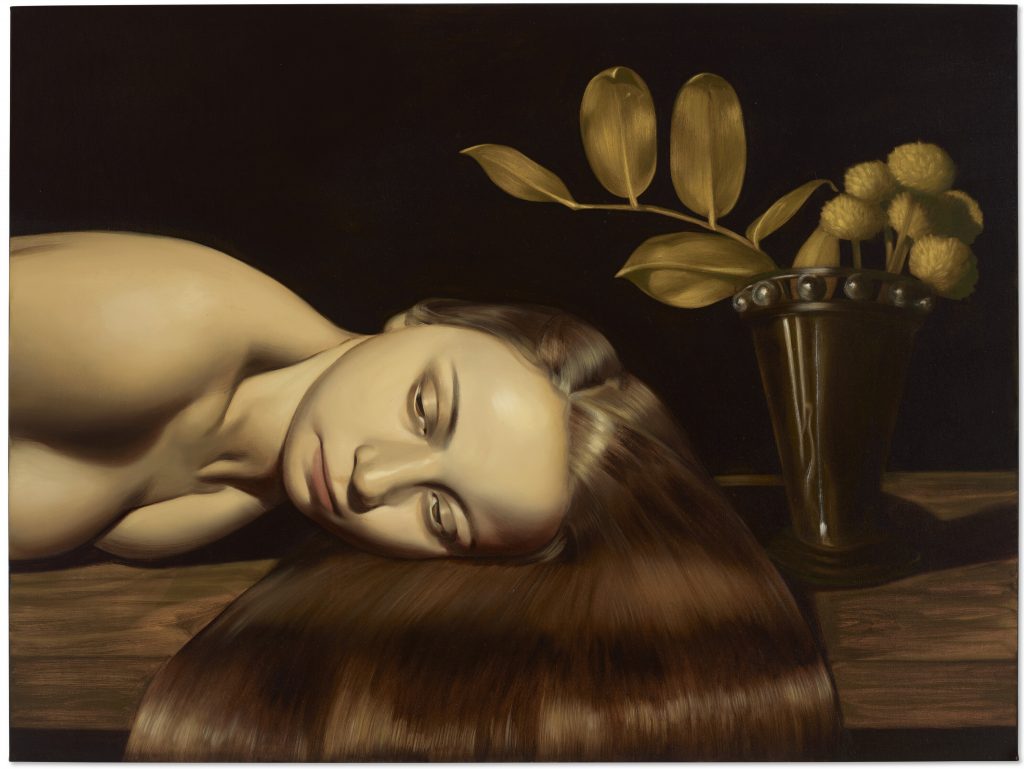
Anna Weyant, Summertime (2020). Courtesy of Christie’s Images, Ltd.
Of course, primary-market prices and demand may tell a different story. But collectors entering the market—not to mention museums considering acquisitions—often use auction prices as a benchmark to determine how much they should pay, which only serves to perpetuate the gap.
“The younger female generations are not generally having to deal with this same problem, thankfully,” Thatcher said.
Women also lag behind men in the more equitable ultra-contemporary sector, with about 23 percent of the segment’s $1.7 billion in auction revenue since 2017, according to the Artnet Price Database.
But younger women are also experiencing significantly more momentum. Total sales by women in the ultra-contemporary segment rose more than 800 percent since 2017. For those born between 1930 and 1974, sales rose just 65 percent.
“I heard female artists in their 50s and 60s say, ‘I guess I have to be almost dead to make it,’” said Smith-Stewart, whose new exhibition, “52 Artists: A Feminist Milestone,” is an homage to the 1971 survey of 26 female artists, many of whom are just being rediscovered five decades later. The new rendition adds a younger cohort, including Hollowell and Anna Park, to examine the evolution of feminist art practices.
“It’s exciting for artists to be within an intergenerational context,” Smith-Stewart said. “They want to understand the legacy. They want to be part of that history.”
Creating new context for older female artists is one way to reinvigorate their markets. At TEFAF New York in May, Heilmann’s 1996 painting Bad Boujeloud was displayed amidst works by Alberto Giacometti, Henry Moore, and Josef Albers on the booth of the blue-chip gallery Eykyn Maclean. The asking price was $450,000 and the work found a buyer, according to Thatcher, who knew the seller.
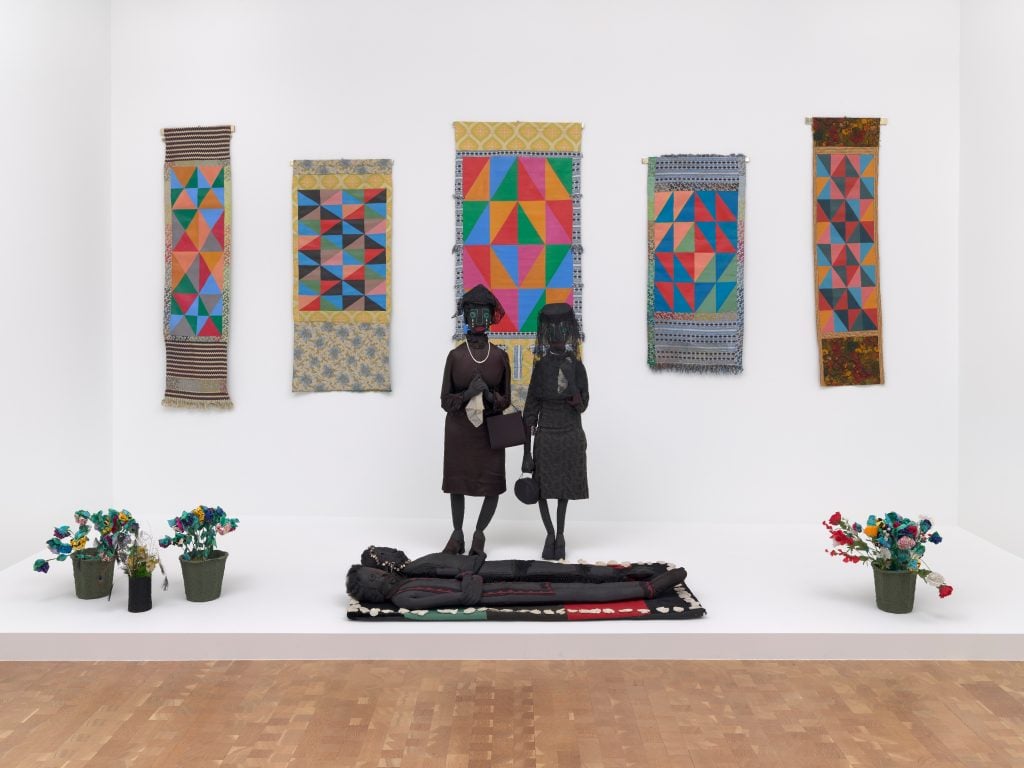
Faith Ringgold, The Wake and Resurrection of the Bicentennial Negro (1975–89). © Faith Ringgold / ARS, NY and DACS, London, courtesy ACA Galleries, New York 2022. Photo: Ron Amstutz; courtesy Glenstone Museum, Potomac, Maryland.
In September, the trendsetting Karma gallery will present a group show by 30 older female artists, including Heilmann, Murray, Ringgold, and Rothenberg.
“There are a lot of female artists that didn’t get the attention they deserved,” said Ivy Shapiro, the show’s curator and sculptor Joel Shapiro’s daughter, who grew up around many of these women. “Why are we only looking at Faith Ringgold now? Elizabeth Murray’s market is not where it should have been. Susan Rothenberg’s horses get quite a value in the market, but the work extends way beyond that.”
Ellie Rines, co-owner of 56 Henry gallery in New York, mixes emerging and older female artists in her program. While the gallery gave Weyant her first solo show in 2019, it also works with the painter Joanne Greenbaum (b. 1953) and sculptor Jessica Stockholder (b. 1959). In November, Rines will do a solo exhibition of work by influential artist Laurie Simmons (b. 1949). (Simmons, for the record, has roughly the same auction total over the past five years as Ivy Haldeman [b. 1985]—around $500,000.)
“If I was collecting artwork right now, I would probably be interested in looking at established female artists,” Rines said. “There’s such emphasis on youth now, but I am much more interested in someone who’s developed their language over 30–40 years. They are artists for the right reason.”
Simmons, whose photo-based installations and films are rooted in issues of gender and feminism, said she and her friends didn’t become artists to make money. When they entered the art world, career paths began with showing at alternative spaces, which eventually led to gallery representation.
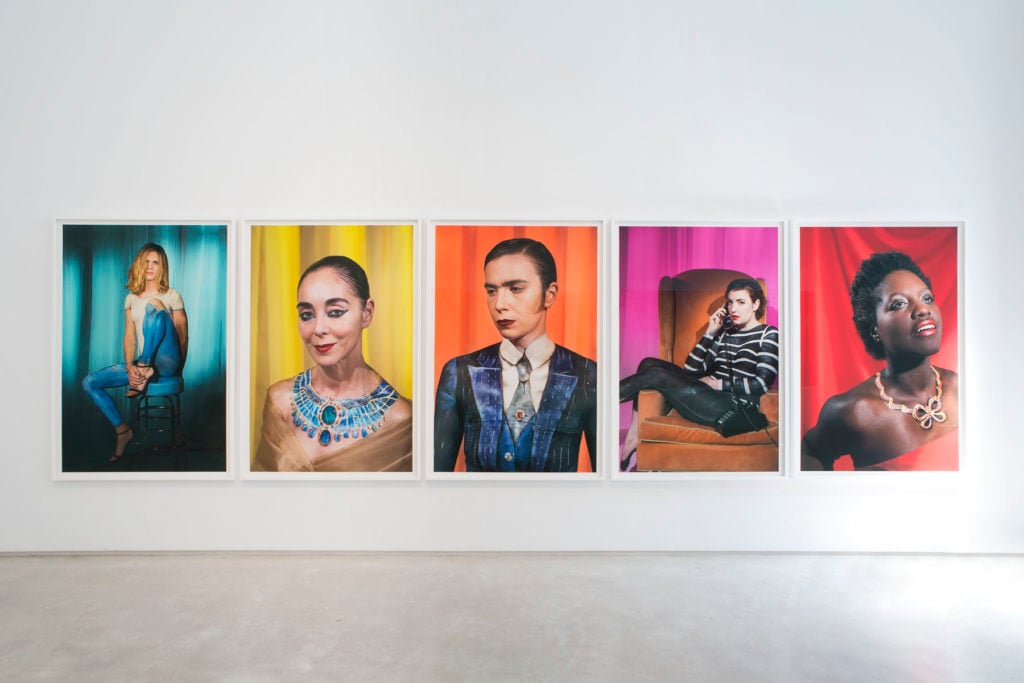
Installation view of “Laurie Simmons 2017: The Mess and Some New” at Salon 94 Bowery. Photo courtesy of Salon 94.
“What we were moving towards was a critical positioning and an opportunity to show our work, to be in museum collections, to be written about,” Simmons said. “There wasn’t a pot of money waiting for anybody. ”
Heilmann, who came to New York in 1968 from San Francisco, worked in daycare centers, as a substitute teacher, and later at the School of Visual Arts. Describing herself as “an old hippie,” she said she never thought about the financial aspect of the art world. Until she turned 40, “when I sold paintings, I would be paid in cash and hide it in a little box in my closet.”
These days, her new paintings sell for $75,000 to $175,000, according to Thatcher—a fraction of, say, a $300,000 new canvas by Shara Hughes (b. 1981).
Money is still not something Heilmann thinks a lot about. “I mainly think about it in a theoretical way,” she said. “Not coming into it [the art world] for that reason and now I look at the whole picture and I realize how culturally significant it is that the value is worth considering in terms of investment.”
When she wants or needs something, she asks her studio manager: “Can I afford that?”
